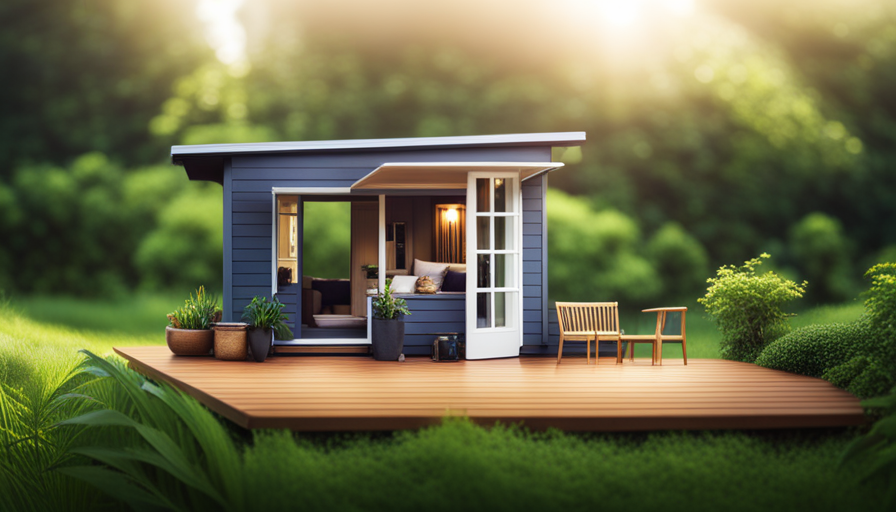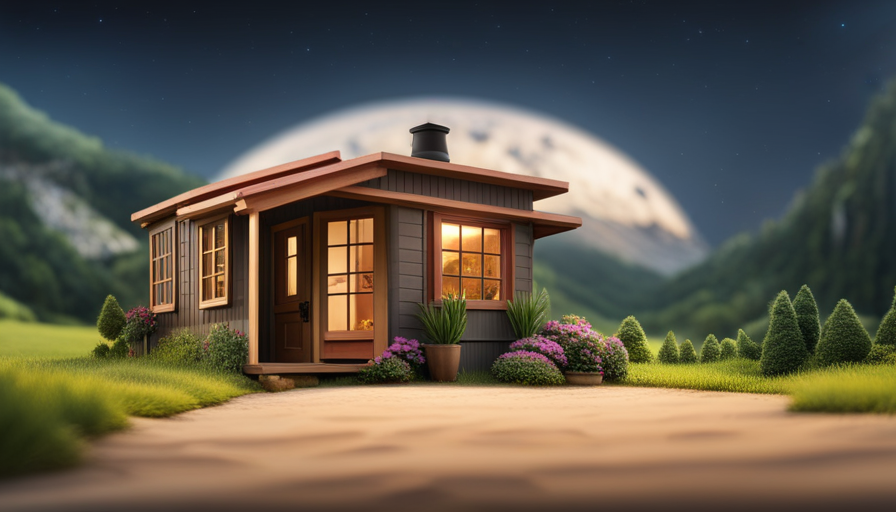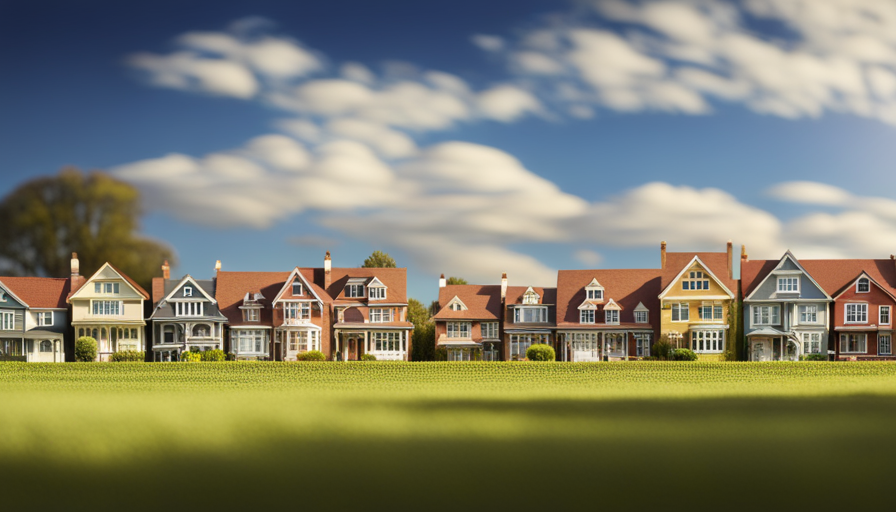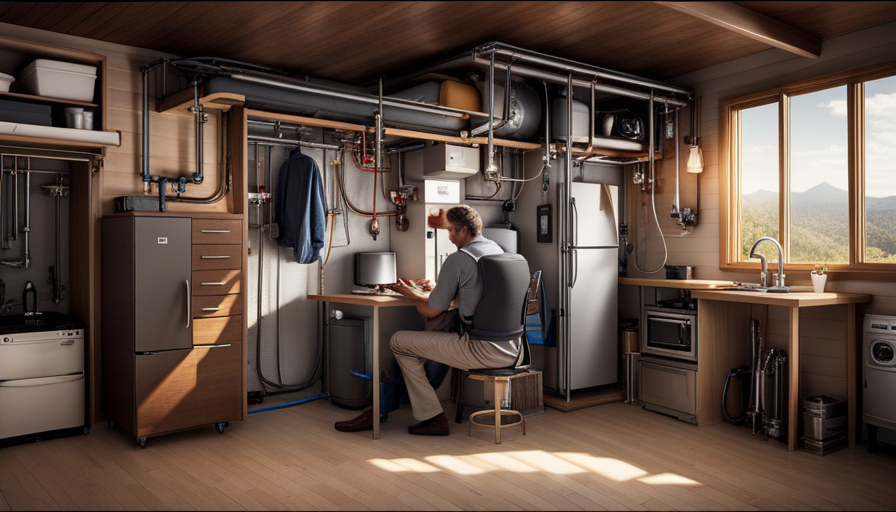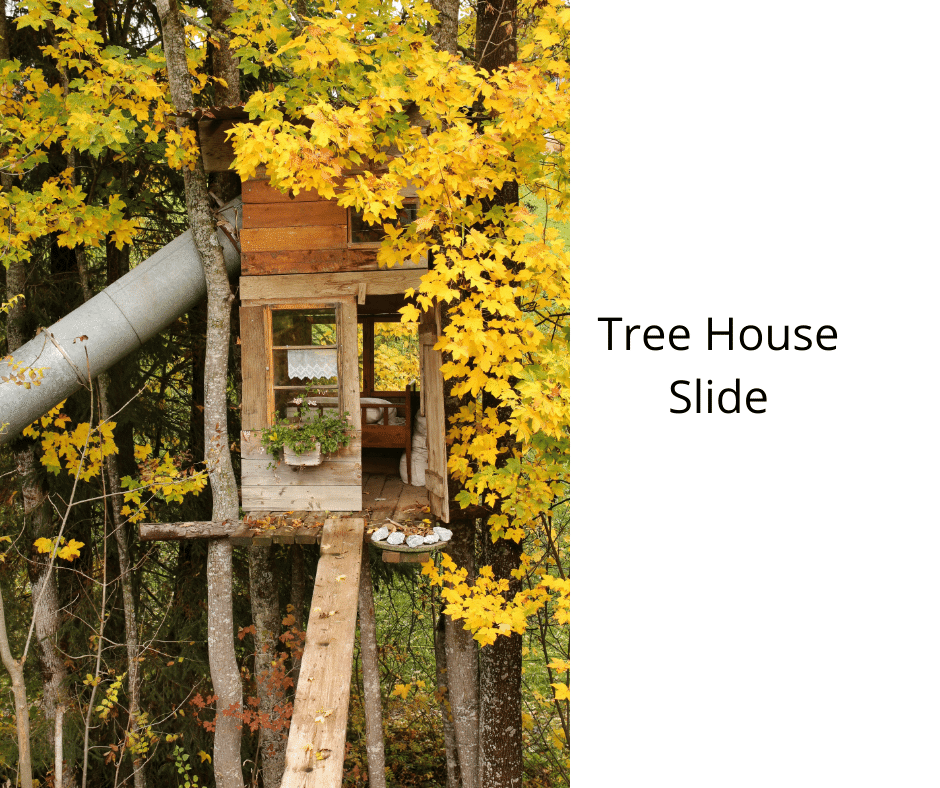Have you ever thought about how to make the most of the space in your small home without sacrificing comfort? Let me share a secret with you: the key is to choose the perfect bed and know the exact measurements it should be.
You see, in the world of tiny living, every square inch matters, and finding the right bed size is crucial. But fear not, for I am here to guide you through this exciting journey of creating a cozy and functional sleeping area.
In this article, we will explore various space-saving bed options, measure your available space, and even delve into the realm of custom beds. We will also discuss how to optimize storage underneath your bed, because let’s face it, we all need that extra space!
So, get ready to transform your tiny house into a dreamy oasis, because the perfect bed awaits you.
Key Takeaways
- Choosing the perfect bed is crucial for maximizing comfort in a tiny house
- Space-saving options like loft beds and Murphy beds can save valuable floor space
- Customization options for bed frames and mattresses enhance functionality in a small living area
- Utilizing built-in storage solutions and under-bed storage containers optimize space utilization in a tiny house
Consider your space limitations
Now, let’s talk about how you can make the most of your limited space when it comes to choosing a bed for your tiny house. Maximizing comfort is essential, but it can be challenging when you have such a small area to work with. However, with a little creativity and some thoughtful planning, you can create a cozy sleeping space that doesn’t compromise on comfort.
One way to maximize comfort is by choosing a bed that serves multiple purposes. Look for beds that come with built-in storage options, such as drawers or compartments underneath. This allows you to utilize the space beneath your bed for storing clothes, bedding, or other items, eliminating the need for additional storage units in your tiny house.
Another creative storage idea is to opt for a loft bed. By elevating your bed, you create valuable space underneath that can be used for a variety of purposes. You can set up a small desk, create a cozy reading nook, or even install a mini closet.
Now that you’ve considered your space limitations and explored creative storage ideas, it’s time to choose the right bed size for your needs. Transitioning into this next section, it’s important to find a bed size that fits your space perfectly without overwhelming it.
Choose the right bed size for your needs
When it comes to selecting the perfect size for your bed, you should consider your specific needs and preferences. In a tiny house, space is limited, so choosing the right bed size is crucial.
There are many space-saving bed designs available that can maximize the use of your limited space. One popular option is a loft bed, which allows you to sleep on a raised platform while utilizing the space underneath for storage or other purposes. Another option is a murphy bed, which can be folded up against the wall when not in use, giving you more floor space during the day.
In addition to considering the bed frame design, you should also think about the mattress type. Memory foam mattresses are a great choice for tiny houses as they can be compressed and rolled up, making them easier to transport and fit through narrow doorways. They also provide excellent support and comfort for a good night’s sleep. Alternatively, you can opt for a futon mattress, which can serve as both a bed and a seating area during the day.
When it comes to maximizing space in your tiny house, exploring space-saving bed options is essential. By choosing the right size and type of bed, you can create a comfortable sleeping area without sacrificing valuable floor space.
Explore space-saving bed options
One interesting statistic to consider is that loft beds can save up to 50% of floor space in a small living area. When it comes to tiny houses, space-saving furniture is essential. That’s why exploring space-saving bed options is crucial.
There are various multifunctional sleeping solutions available that can maximize the limited space in a tiny house. One popular option is a loft bed, which elevates the sleeping area and creates extra space underneath for storage or other purposes. Loft beds often come with built-in shelves, drawers, or even a desk, providing additional functionality.
Another space-saving bed option is a Murphy bed, also known as a wall bed. These beds can be folded up against the wall when not in use, freeing up valuable floor space during the day.
Other innovative solutions include sofa beds, futons, and daybeds, which can serve as both seating and sleeping areas. These multifunctional beds are perfect for accommodating guests or creating a comfortable lounging space during the day.
When designing a tiny house, it’s important to measure your available space to ensure that the bed you choose fits perfectly. By considering the dimensions of your living area, you can find the ideal space-saving bed that meets your needs and maximizes functionality.
Transitioning into the next section about measuring available space, it’s crucial to carefully consider the dimensions to make the most of your tiny house.
Measure your available space
To make the most of your limited living area, it’s crucial that you measure the available space in order to find the perfect bed for your tiny home. Understanding the available space limitations will help you narrow down your options and ensure that you choose a bed that fits seamlessly into your small abode.
To give you a visual representation of how much space you have to work with, imagine a 3 column and 3 row table. In the first column, you have the width of your tiny house, in the second column, you have the length of your tiny house, and in the third column, you have the height of your tiny house. Each row represents a different area in your home, such as the living area, kitchen, and bedroom. By filling in the dimensions of your available space in this table, you can visualize the space-saving bed options that will work best for you.
Now that you have a clear understanding of your available space, it’s time to determine the ideal length for your bed. This will ensure that your sleeping area is comfortable and doesn’t take up unnecessary space.
Determine the ideal length for your bed
Finding the perfect fit for your sleeping area involves determining the ideal length of your bed. When it comes to tiny houses, space is precious, so it’s crucial to explore bed frame options that can maximize your sleeping area.
Here are three sub-lists to help you make the best decision:
-
Bed frame designs: Consider a platform bed with built-in storage compartments underneath to maximize space utilization. Alternatively, a loft bed can create more floor space by elevating your bed and allowing for storage or a workspace below. Think creatively about how different bed frame designs can optimize your tiny house layout.
-
Mattress size: Choose a mattress size that complements the dimensions of your bed frame. Opting for a twin or full-size mattress can save space, but be sure to consider your personal sleeping preferences and space requirements.
-
Customization options: Some bed frame manufacturers offer customization options, such as adjustable lengths or modular designs. These features can be particularly useful in a tiny house, as they allow you to adapt your bed to fit your specific needs.
Considering these factors will help you find the perfect length for your bed while maximizing the functionality of your sleeping area.
Now, let’s consider your sleeping preferences and how they can further enhance your tiny house experience.
Consider your sleeping preferences
Surprisingly, my sleep preferences can actually make or break my tiny house experience. When it comes to designing the perfect bed for my tiny house, I need to consider my sleeping positions and mattress thickness.
As a back sleeper, I prefer a firm mattress that provides adequate support for my spine. However, if I were a side sleeper, I would opt for a softer mattress that allows for better contouring of my body. It is important to choose a mattress thickness that suits my comfort level, as a thinner mattress may not provide enough cushioning, while a thicker one may feel too bulky in my limited space.
To maximize the functionality of my tiny house bed, I should also explore custom bed options. This could involve incorporating storage compartments underneath the bed or installing a pull-out trundle bed for guests. By customizing my bed to fit my specific needs, I can ensure that my tiny house remains a comfortable and inviting space.
With the right bed, I can enjoy a good night’s sleep and make the most of my tiny house living experience.
Explore custom bed options
When it comes to sleeping in a tiny house, considering your sleeping preferences is crucial. However, once you have determined your ideal sleep setup, it’s time to explore custom bed options that will perfectly fit your tiny house lifestyle.
One of the first things to consider is a custom mattress. Since traditional mattress sizes may not fit your space, opting for a custom-made mattress ensures a perfect fit. This way, you can maximize every inch of your tiny house without compromising on comfort.
Another popular choice for tiny house beds is a loft bed. By utilizing the vertical space, loft beds provide ample room underneath for other essential functions, such as storage, a workspace, or even a cozy seating area.
To give you a visual representation of the possibilities, here’s a handy table showcasing different custom bed options:
| Bed Type | Size (inches) | Features |
|---|---|---|
| Murphy Bed | 52 x 75 | Folds up against the wall |
| Daybed | 39 x 75 | Doubles as a seating area |
| Trundle Bed | 38 x 75 | Additional pull-out mattress |
| Bunk Bed | 39 x 75 | Ideal for shared sleeping |
| Futon | 54 x 75 | Converts into a sofa |
Now that we have explored custom bed options, let’s move on to optimizing storage space underneath the bed, making the most of every nook and cranny in your tiny house.
Optimize storage space underneath the bed
To truly maximize the space in your compact abode, consider optimizing the storage area underneath your sleeping quarters. When it comes to tiny house living, every square inch counts, and the area underneath your bed is no exception. By incorporating innovative designs and clever storage solutions, you can transform this often-overlooked space into a functional and organized storage area.
One way to maximize storage underneath your bed is by choosing a bed frame with built-in drawers or shelves. These innovative designs allow you to store clothing, linens, and other items right beneath your mattress, freeing up valuable closet and cabinet space. Additionally, some bed frames even feature hydraulic lifts, allowing you to easily access the storage area without straining your back.
Another option is to utilize under-bed storage containers or bins. These can be easily slid in and out, providing a convenient and accessible way to store items such as shoes, seasonal clothing, or extra bedding. Look for containers with wheels or handles for added convenience.
Optimizing the storage space underneath your bed is a smart and practical way to make the most of your tiny house. By incorporating innovative designs and utilizing under-bed storage solutions, you can maximize your storage space without sacrificing style or comfort. Remember, seeking professional advice or assistance if needed can help ensure that your storage solutions are safe and secure.
Transitioning into the next section, it’s important to consider professional guidance when it comes to implementing these storage options in your tiny house.
Seek professional advice or assistance if needed
If you find yourself navigating the complex world of storage solutions for your compact living space, it may be wise to seek out professional guidance or assistance to ensure the safety and effectiveness of your chosen options.
When it comes to optimizing storage space underneath the bed in your tiny house, seeking professional advice can provide valuable insights and expertise. Here are five reasons why seeking assistance is a smart move:
-
Expertise: Professionals in the field have extensive knowledge and experience in maximizing storage solutions for small spaces.
-
Safety: They can ensure that the storage solutions are properly installed and secure, minimizing the risk of accidents or damage.
-
Customization: Professionals can tailor the storage solutions to fit your specific needs and preferences, maximizing functionality and efficiency.
-
Space utilization: They can help you make the most of every inch of available space, ensuring that no area goes to waste.
-
Design harmony: Professionals can assist in creating a cohesive and aesthetically pleasing design, integrating the storage solution seamlessly into your tiny house.
By seeking professional advice and assistance, you can optimize your storage space underneath the bed in a safe and effective manner. This will create a solid foundation as you move forward to the next step of creating a cozy and comfortable sleeping area.
Create a cozy and comfortable sleeping area
Creating a snug and inviting sleeping nook is essential for a truly restful night’s sleep in your compact living space. When designing a bed for a tiny house, it’s important to prioritize comfort and maximize the limited space available.
One way to create a cozy sleeping nook is by investing in a high-quality mattress that provides the right amount of support for your body. Look for a mattress that is specifically designed for small spaces, such as a compact foam mattress or a futon-style mattress that can be easily folded and stored during the day.
To maximize comfort in a small space, consider incorporating built-in storage solutions into your bed design. This could include drawers or shelves underneath the mattress to store extra blankets, pillows, or clothing. Additionally, adding soft bedding and plush pillows can help create a welcoming and comfortable atmosphere. Opt for lightweight and breathable materials, such as cotton or linen, to ensure a comfortable temperature throughout the night.
Incorporating adjustable lighting options, such as bedside lamps or fairy lights, can also contribute to the cozy ambiance of your sleeping nook. These soft, warm lights can create a relaxing atmosphere and help you wind down before bed. Lastly, don’t forget to add personal touches, such as decorative pillows or a cozy throw blanket, to make your sleeping area feel like a true sanctuary.
By carefully considering the design and elements of your bed, you can create a cozy and comfortable sleeping area in your tiny house.
Frequently Asked Questions
What are some space-saving bed options for a tiny house?
When it comes to space-saving bed designs for a tiny house, there are plenty of creative loft bed ideas to consider. One interesting statistic is that loft beds can save up to 50% of floor space, making them a popular choice for maximizing the limited square footage in tiny homes.
How do I measure my available space for a bed in a tiny house?
To measure my available space for a bed in a tiny house, I start by assessing the dimensions of the room. Then, I consider maximizing storage capacity by choosing a bed frame with built-in drawers. Finally, I ensure the mattress size fits perfectly for comfort.
What is the ideal length for a bed in a tiny house?
The ideal bed length for a tiny house is 75-80 inches, as it maximizes space without sacrificing comfort. Bed size recommendations for small spaces include twin, twin XL, or even a loft bed to optimize floor space.
Are there any custom bed options available for tiny houses?
Yes, there are various custom bed designs and creative bedding solutions available for tiny houses. From multipurpose furniture to space-saving loft beds, these options cater to the unique needs of small living spaces.
How can I optimize storage space underneath the bed in a tiny house?
To optimize storage space underneath the bed in a tiny house, I suggest thinking outside the box. Get creative with storage solutions like built-in drawers, rolling bins, or even a lift-up mattress. By maximizing space, you’ll be amazed at how much you can fit!
Conclusion
In conclusion, finding the perfect bed for your tiny house can be a challenging but rewarding process. By considering your space limitations and choosing the right bed size, you can create a cozy and comfortable sleeping area. Additionally, exploring space-saving options is important. One interesting statistic to note is that, according to a survey, 70% of tiny house owners opt for custom-made beds to maximize their limited space. So, don’t hesitate to think outside the box and get creative with your bed choices to make the most of your tiny home!
Hi, I’m Emma. I’m the Editor in Chief of Tiny House 43, a blog all about tiny houses. While tree houses are often associated with childhood, they can be the perfect adult retreat. They offer a cozy space to relax and unwind, surrounded by nature. And since they’re typically built on stilts or raised platforms, they offer stunning views that traditional homes simply can’t match. If you’re looking for a unique and romantic getaway, a tree house tiny house might just be the perfect option.

